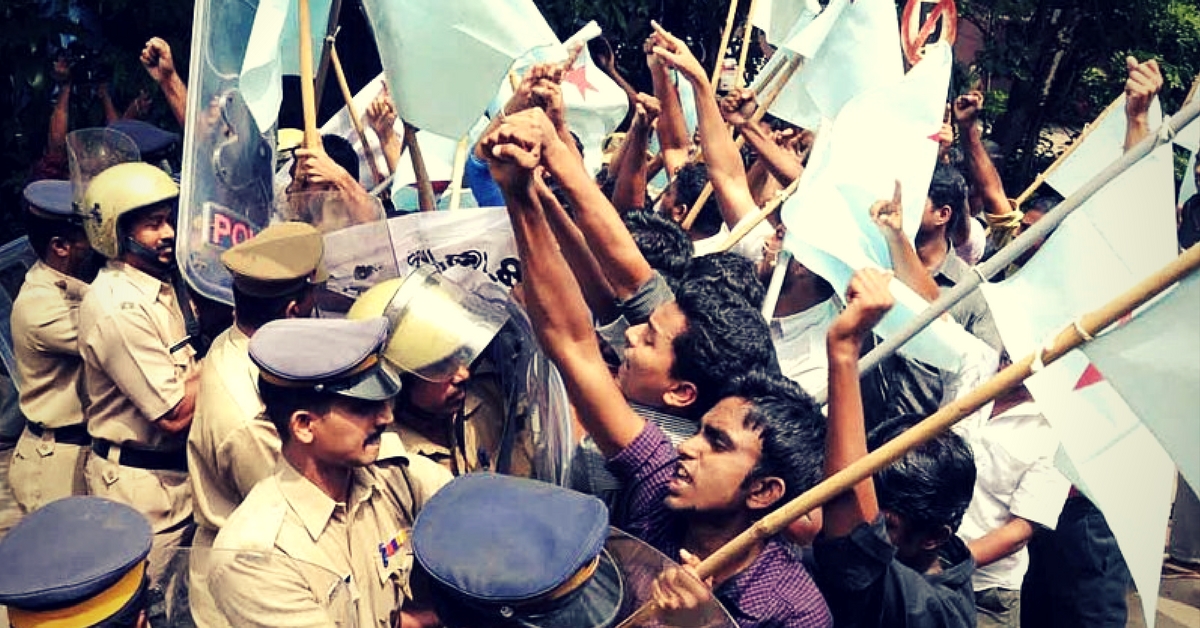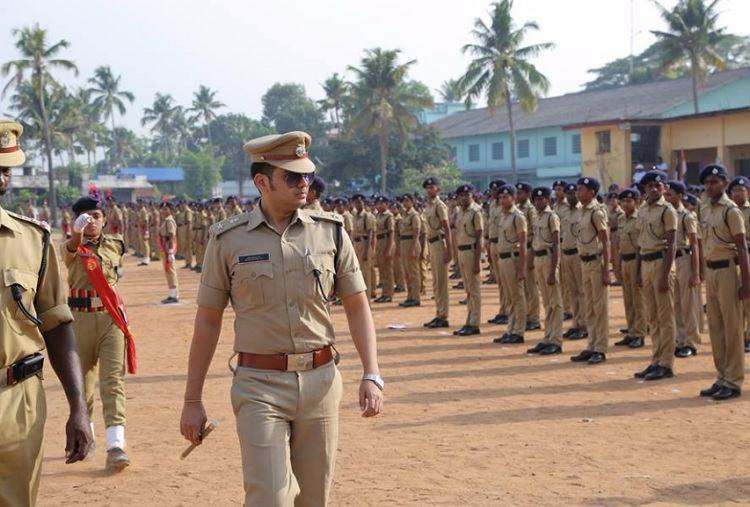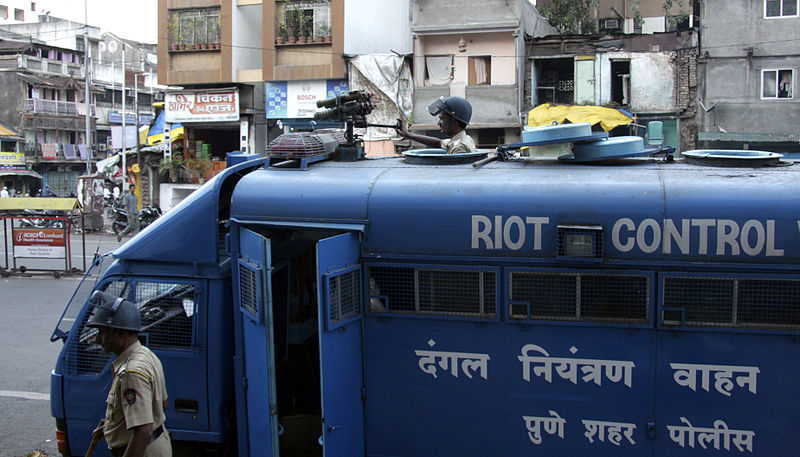Violent Protests and Riots: How The Police Can Manage Civil Strife Better
If we, the people who elect our representatives, do not take care of the police, how can they take care of us.

The communal clashes in Kasganj, Uttar Pradesh, on Republic Day, resulted in the death of one person, while two others were severely injured.
The local police have managed to bring the situation under control, and reports indicate a return to normalcy. Led by the Aligarh Divisional Commissioner, a meeting between leaders from the local Hindu and Muslim communities, police officials, traders and politicians at a town municipal hall helped douse the flames.
Speakers at the meeting blamed the police for its failure to prevent the violence, reported The Hindu. They argued that besides arriving late on the scene, the police had no prior intelligence of the incident that triggered the violence.
The history of Independent India is replete with violent protests, agitations and riots. At the forefront of dealing with these incidents are the police, who are the first responders, and security forces. Time and again, an important question comes to the forefront. How should the police deal with violent protests?
The answers lie in the very institution.
Under Article 246 of the constitution, matters pertaining to ‘public order’ and ‘police’ are under the direct jurisdiction of State governments. However, the constitution also empowers the Centre to provide necessary assistance when the state apparatus is overwhelmed. The Ministry of Home Affairs deploys units of the Central Armed Police Forces to aid the State police in imposing peace in the affected areas.

Last April, the Observer Research Foundation, an influential Delhi-based think tank, published a report on dealing with violent civil protests. It stated five key elements that the local police and security forces must take into account when formulating a plan of action—information, intention, method, logistics, and communication.
Among other variables, information about the nature of the incident, the reason why it is happening, and the grievances that drive it is critical. A clear assessment allows the police to formulate a coherent policy depending on the nature of the incident (whether it’s a political agitation, communal riots or even caste-related violence).
Based on field experiences of former police officers, the report speaks of how the police must also make its intentions clear. Are they there merely to disperse crowds or is the application of force the only option available? A clear understanding will allow the local police to delineate responsibilities for personnel on the ground.
Efficient logistics, including the availability of necessary riot gear, controlling traffic routes to ensure the provision of timely medical emergency service, and the presence of adequate personnel at strategic points, among others require necessary due diligence. Finally, the police must establish a constant line of communication with the general public driven by a continuous stream of media briefings and press releases.
With the advent of social media, pernicious rumours are disseminated at a much quicker pace. Constant communication between the government, senior police officials and public will make it easier to develop trust and quell such rumours. In times of civil strife, the government often blocks internet services, which studies have shown aren’t useful.
There are provisions within the law that allow police to undertake preventive or punitive measures, including arrest, against those planning an unlawful assembly of people. Besides Section 141 to 190 of the Indian Penal Code, the State police also have the option of exercising Section 149 to 151 of the Code of Criminal Procedure in dealing with critical instigators of violent protest. Success in employing all these measures depend on the speed at which the State responds.
“State armed police face issues of manpower shortage, as well as lack of training and proper equipment, forcing state governments to seek help from the Centre which, in turn, deploys the CAPFs. The Union government avoids getting blamed for not coming to the assistance of the state; the state government steers clear of responsibility for any possible wrongdoing that may occur. Over the years, such an arrangement has left state police forces with little capacity to deal with violent civil protests on their own,” says the ORF report.
On numerous occasions, State governments have sought the assistance of either the Indian Army or the CRPF in dealing with incidents of civil unrest. With ‘public order’ and ‘police’ under the remit of State governments, this shouldn’t be the case.

In the aftermath of the violent Jat agitation in Haryana nearly two years ago, the Prakash Singh Committee, appointed by the Haryana government said “states should have some battalions specially trained and equipped to deal with mobs,” instead of calling on the army of CRPF every time. They operate against other kinds of threats (Maoists, insurgents, terrorists) and spread across different regions.
This is where things get murkier for the police force, for they are under the control of politicians, whose special interests do not necessarily are not in consonance with public order.
The police in India are governed by the colonial-era Police Act of 1861 which envisaged their abject loyalty to the rulers. Various government-appointed commissions were set up to bring about reforms in policing. However, these reports continue to gather dust.
Despite certain states initiating changes, there remains little public accountability on their operational structure, especially when it comes to transfers. In 1996, the Supreme Court had asked state governments to constitute a State Security Commission reasonably independent of the political executive, which will insulate the police from undue interference.
However, most state governments vehemently opposed it.
As stated above, the lack of capacity in dealing with large groups of violent protestors is a serious concern. Every state has their own police academy, where new recruits are imparted with lessons on how to use their weapons, basic procedures of maintaining law and order, riot control and physical training, through courses that last for a few months to a year. These academies are criminally underfunded.
According to a 2016 report released by the Bureau of Police Research and Development, on an average, only 1% of the total police expenditure is allotted to police training at these academies.
It is imperative that the police are imparted with both theoretical (tactical formations) knowledge and vigorous practical exercises on how to deal with different kinds of protests, agitations and riots.

“Formations for mob control are based on standard infantry formations. If the constabulary is well drilled in these formations, no difficulty will be experienced in adapting the small variations required for efficient mob and riot control,” says this report by former IPS officer PPS Sidhu.
It is important to putting necessary systems in place. This will ensure that even when there is a sudden outburst of violence or a gathering of large crowds, the police know how to deal with it without resorting to excessive violence. This is how institutions develop.
Staying on the subject of capacity, there is a severe shortage of manpower as well. Last July, the Centre told Lok Sabha that there is a shortage of over 5 lakh police personnel in the country as compared to their overall sanctioned strength.
“As on January 1, 2017, there are 3,905 IPS officers in position against an authorised strength of 4,843,” said Minister of State for Home Hansraj G Ahir.

According to the BPRD, the police to population ratio in India is 180 personnel per 1,00,000 population, which is significantly lower than what the UN recommends (222 per 100,000 population).
Problems stem from the time taken to hire a replacement when a senior police official retires, allied with financial and budgetary constraints. How many times have we seen the police outnumbered by a mob? What option do they have but to use excessive force or retreat, leaving the situation on the ground combustible? This shortage of personnel also has deleterious effects on their health, since they work long hours without commensurate pay.
Article 19 of the Constitution, among other things, guarantees citizens the right “to assemble peaceably and without arms.” It is a sacred democratic right. At the same time, there are “reasonable restrictions” written in our laws that give police the necessary tools to protect the lives of citizens and property.
How they exercise that responsibility is critical to how our democracy functions. The institution of police is struggling to keep up with all its inadequacies that our elected representatives have not bothered to address. If we do not take care of the police, how will they take care of us?
Like this story? Or have something to share? Write to us: [email protected], or connect with us on Facebook and Twitter.
NEW: Click here to get positive news on WhatsApp!
If you found our stories insightful, informative, or even just enjoyable, we invite you to consider making a voluntary payment to support the work we do at The Better India. Your contribution helps us continue producing quality content that educates, inspires, and drives positive change.
Choose one of the payment options below for your contribution-
By paying for the stories you value, you directly contribute to sustaining our efforts focused on making a difference in the world. Together, let’s ensure that impactful stories continue to be told and shared, enriching lives and communities alike.
Thank you for your support. Here are some frequently asked questions you might find helpful to know why you are contributing?


This story made me
- 97
- 121
- 89
- 167










